A new design for turbine blades, inspired by windmill blades, is said to overcome most of the handicaps of conventional designs including cost, manufacturing complexity, and maintenance. Inspiration came from a classic Dutch windmill that used several sections of canvas on each blade. Instead of canvas, the student pilot and inventor Phillip Ridings began questioning conventional reasoning, “Why not use small and more aerodynamic winglets supported by a frame? The blade would cut through the air, like a knife, yet capture all the winds power by simply connecting these smaller more efficient airfoils to the leading and trailing edges?”
“The blade would be lighter than conventional designs of the same length, made of only six components, and modular so that worn or damaged sections could be easily replaced.” Ridings began thinking about different designs after hearing news of a wind farm’s turbine blades that needed replacing well before the end of their expected lifespan.
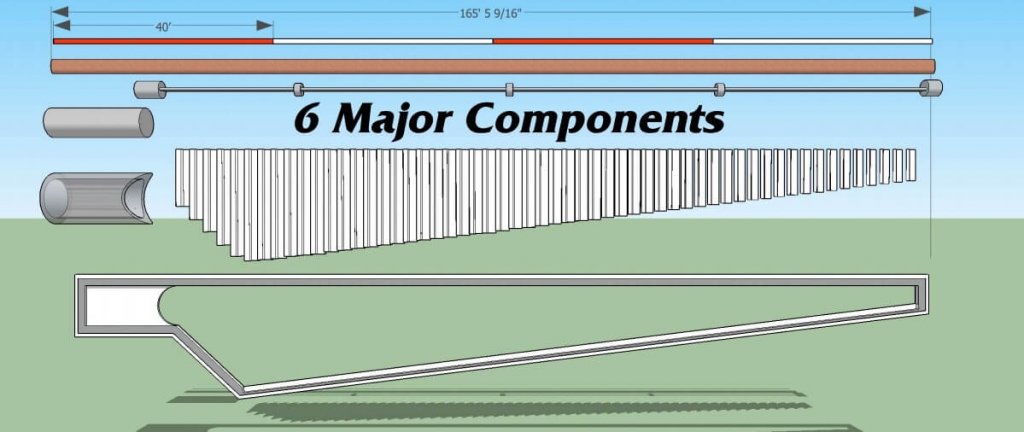
The six components for a 50-m WyndBlade (top to bottom) include the leading edge, airfoil control rods, core, root, airfoil blades, and frame.
Conventional blades come with high costs in their manufacturing and transport. They are also difficult to maintain and inspect. Ultrasound and acoustics analysis provide limited insight. Ridings states that this new blade design would remove the guesswork because there are no hidden internal components.
What’s more, he adds, the new design would produce more power because it generates more torque all the way to the root. Through his own research, he discovered that one-third of a conventional blade from the root does nothing to generate lift, it’s merely there to support the full weight of the blade.
Computer models looked promising, so Ridings is currently working on printing a 3D, three-foot scale model for physical tests. He calls his design “WyndBlade”
The six components include:
The frame, an extrusion, holds the entire blade together. Reinforced 40-ft sections lock in place with connections to create longer or shorter blades. As part of the customization, the blades can be as short as 40 ft or 200 ft and more.
The blade airfoils, extrusions, produce lift. The designed, placement, and precise angle help generate lift and rotation as air passes over each individual airfoil.
The root, a custom component, connects the blade to the hub. Hubs come in different sizes so each blade can be customized to fit any other manufactured model as a replacement blade.
The core is also a custom construction. It supports the root by making the connection more stable. The core also helps control the pitch angle for the entire blade. This means the blade can rotate to a zero angle of attack, lowering air resistance in higher than normal winds for better survivability.
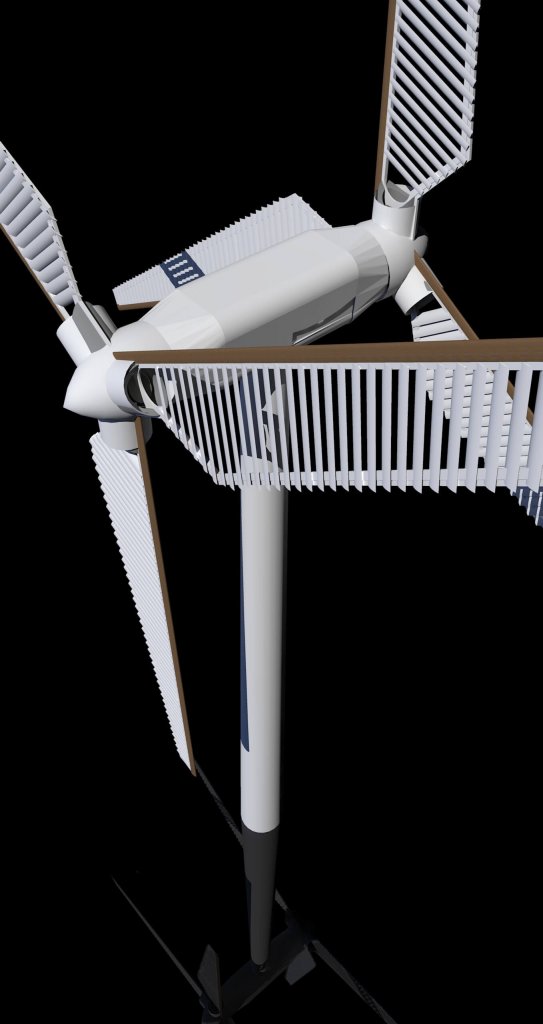
Sufficiently light blades would allow mounting two rotors on a turbine for greater power outputs.
www.wyndblade.com
Airfoil control rods are two steel rods that extend the length of the blade, one on each side. This device alters the angle of all the airfoils to optimize airflow. “The fully closed WyndBlade captures the slightest of breeze. When opened, the airfoils will let air pass through to help maintain a rotational speed. When fully open, blade rotation would slow, like an airbrake and help with over-speed issues. When winds become too fast, the entire blade would pitch to a zero-degree angle for its protection. Also, in a fixed-blade design, all blades are optimized for any wind speed. A spring-loaded version of the design would help dissipate heavier than normal gusts to protect the entire blade from extreme wind pressures and damage.
The leading edge is foam core. The leading edge on Wyndblade is easily replaceable as are all the other parts. “It’s a hard-foam structure and has an airfoil shape. The airflow resistance is 80% less than conventional blades because the air has a shorter distance to travel as it passes over the smaller surface of the leading edge. There is no major airflow resistance and it generates smaller, low-pressure areas that bleed off into the open airfoils framed in the main body,” he noted.
Ridings adds that this new blade design eliminates a range of problems related to conventional designs, such as flexing issues, high loads and pressures, rotor-tip damage, leading-edge damage, complex manufacturing, and high transportation costs.
Additional advantages he noted include a weight reduction, easier maintenance, a reduction in turbulence, 40-ft sections would be transported and assembled at the work site in conventional 53-ft trailers, and major increased aerodynamic performance. Cost reductions would come in maintenance, manufacturing, and repair. Also, he points out, conventional blades create huge a low-pressure vortices (wake) that kills bats if they stray too close. Wyndblade would not generate these vortices (wakes) because the bulk of the low-pressure wind is sliced into smaller sections and would dissipate faster. Thus reducing the turbulent pressures bats have been known to fly through.
So far, he has concepts for nine different models using these three arrangements of the interior blades: vertical (the Hawk), angled (the Falcon), and curved (the Eagle) all of which could come with variable, spring loaded or fixed angles on the airfoils. He’s currently working on another configuration for smaller wind turbines.
Filed Under: Blades

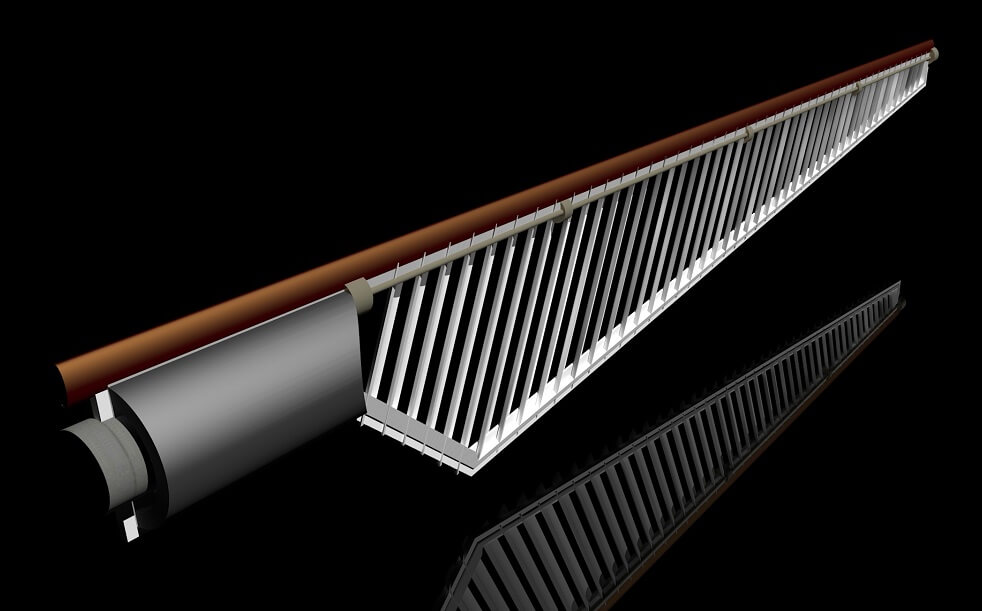
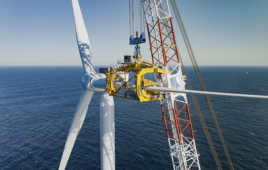
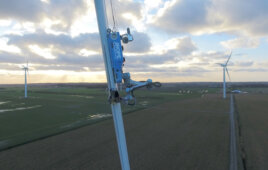
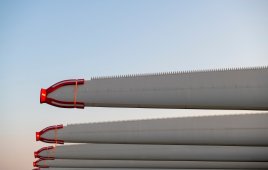
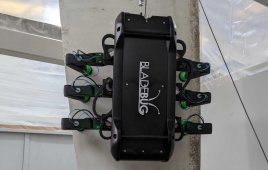
Thank you for sharing this. I am interested in learning more of Riding’s research if that is possible. I am in the process of designing a classic Dutch windmill, but want to make it efficient. So this design is of particular interest to me. If more of Riding’s work is available, please let me know.